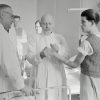Why User1st HC Hiring Wins: 7 Proven Ways Human-Centered Design Boosts Candidate Engagement (2025)
In the competitive world of healthcare recruitment, attracting and securing top talent requires more than just posting job openings. It demands a thoughtful, empathetic approach that prioritizes the needs and experiences of candidates. This is where Human-Centered Design (HCD) comes into play. By adopting a “User1st HC Hiring” philosophy – putting the User (the healthcare candidate) First in your Healthcare Hiring design – organizations can transform their recruitment process, boost engagement, and ultimately build stronger, more dedicated teams. Hathaway Healthcare Staffing believes in the power of candidate-centric strategies to achieve optimal workforce solutions.
Table of Contents
What is Human-Centered Design and Why Apply It to Healthcare Hiring?
Human-Centered Design (HCD), often used interchangeably with Design Thinking, is a problem-solving approach that puts the needs, perspectives, and experiences of the end-user at the forefront of the design process. Its core principles, as highlighted by design pioneers like IDEO, involve empathy, ideation, prototyping, and testing. When applied to healthcare hiring, HCD means designing your recruitment journey from the candidate’s point of view. This approach helps create a more positive, engaging, and effective candidate experience healthcare professionals will value, leading to better attraction and selection of talent who are a genuine fit.
The “User1st HC Hiring” Philosophy: Putting Candidates at the Core
The “User1st HC Hiring” philosophy is about a fundamental shift in perspective: moving from an organization-centric recruitment model (focused primarily on the employer’s needs and processes) to a candidate-centric recruitment healthcare model. This means actively seeking to understand the journey, pain points, motivations, and desires of healthcare job seekers, and then designing every touchpoint of the hiring process to meet those needs effectively and respectfully. It’s about creating a “user-friendly” experience that makes candidates feel valued, informed, and positive about your organization, regardless of the hiring outcome.
7 Proven Ways Human-Centered Design (User1st HC Hiring) Boosts Engagement
Implementing a “User1st HC Hiring” approach through human-centered design principles can significantly boost candidate engagement. Here are seven proven ways:
1. Deeply Empathizing with Healthcare Job Seekers
The first step in any HCD process is empathy. Invest time in understanding what healthcare job seekers really want in 2025. Create detailed candidate personas for different clinical and administrative roles, considering their unique career aspirations, work-life balance needs, and what they value in an employer. This deep understanding, as explored in our insights on what healthcare job seekers want, allows you to tailor your entire recruitment process to resonate with their specific motivations.
2. Co-Creating Solutions with Candidate Input
Don’t design in a vacuum. Involve your target users—current employees (especially recent hires who have just been through the process) and even potential candidates (through surveys or focus groups)—in co-creating or providing feedback on your hiring process. Their insights can be invaluable in identifying pain points and innovative solutions that truly make your “User1st HC Hiring” approach effective.
3. Designing Clear, Empathetic, and Accessible Communication Touchpoints
Every piece of communication—from job descriptions and careers page content to automated emails and interview invitations—should be designed with the candidate’s perspective in mind. Use clear, concise, and empathetic language. Ensure all materials and platforms are accessible to individuals with disabilities. An engaging healthcare careers page is a prime example of where empathetic design matters.
4. Streamlining and Simplifying the Application Process
A lengthy, complicated, or non-mobile-friendly application process is a major deterrent for busy healthcare professionals. Apply HCD principles to map out the current application journey, identify friction points, and redesign it for simplicity and ease of use. This might involve reducing unnecessary steps, minimizing required fields in the initial application, and offering options like “Apply with LinkedIn.” Avoiding common healthcare hiring mistakes like a poor application process is key.
5. Creating More Meaningful and Respectful Interview Experiences
The interview stage is a critical touchpoint. A “User1st HC Hiring” approach ensures interviews are well-structured, fair, and respectful. This includes training interviewers on active listening and empathetic communication, providing candidates with clear information about what to expect, and offering timely and constructive feedback. Designing inclusive interview processes is a core component of this.
6. Prototyping and Testing New Hiring Process Elements
Before fully implementing significant changes to your hiring process, HCD encourages prototyping and testing. This could involve A/B testing different versions of a job ad, piloting a new interview format with a small group of candidates, or testing the usability of a new application platform. Gathering user feedback at this stage allows for iteration and refinement.
7. Continuously Gathering Feedback and Improving the Candidate Journey
A “User1st HC Hiring” commitment means continuous improvement. Regularly solicit feedback from candidates (both hired and not hired) about their experience at various stages of the process. Use candidate experience surveys, post-interview feedback forms, and even insights from exit interviews (for insights on why people leave) to identify areas for ongoing optimization.
The Impact of Human-Centered Design on Healthcare Talent Acquisition Metrics
Adopting a “User1st HC Hiring” approach, grounded in human-centered design, can positively impact key talent acquisition metrics. These include improved application completion rates, faster time-to-hire, higher offer acceptance rates, enhanced quality of hire (as candidates are better matched and informed), and a stronger employer brand due to positive word-of-mouth. Measuring these improvements, as discussed by experts like the Nielsen Norman Group on measuring user experience, can demonstrate tangible ROI.
Hathaway Healthcare Staffing: Championing a Candidate-First Approach
Hathaway Healthcare Staffing inherently understands the principles of “User1st HC Hiring.” Our success is built on creating positive, respectful, and efficient experiences for the healthcare professionals we work with, and ensuring they are well-matched with client organizations that also value a candidate-centric approach. When you partner with healthcare staffing experts, we bring this people-first philosophy to your talent acquisition efforts.
Designing for People – The Future of “User1st HC Hiring”
Human-Centered Design offers a powerful framework for transforming healthcare recruitment from a transactional process into a positive and engaging candidate journey. By consistently applying the “User1st HC Hiring” philosophy—empathizing with candidates, designing for their needs, and continuously seeking feedback—healthcare organizations can not only attract and hire better talent but also build a stronger, more trusted employer brand. This people-first approach is the future of successful talent acquisition. For support in implementing candidate-centric recruitment strategies, contact Hathaway Healthcare Staffing.






